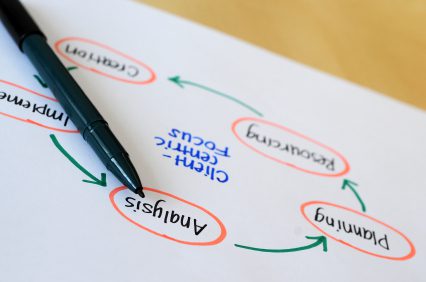Customer service is part of stakeholder management that is frequently overlooked. Most projects develop a list of stakeholder as part of their communication planning include customers, clients or ‘end users’ in the list and then get on with the work of the project.
However, if you think about your own life, the cafés, service stations, airlines, hairdressers and shops you choose to use on a regular basis generally have good customer service as one of the attractions that keeps you going back. Quality and price matter but the friendly and efficient customer service is likely to be the differentiator between your preferred option and two or three other businesses with similar offerings within the same area.
This same concept applies to winning repeat business for you and your organisation. If you want repeat business (and to stay employed) your customer service skills matter!
Project teams are temporary organisations and as with any other ‘organisation’ the project needs to provide a good service its customers, the difference is a project has a wide range of different types of customer requiring deliverables or information from the ‘project organisation’ so you need to be more adept at excellent service delivery than many simpler organisations, simply being ‘good’ may not be good enough!
There are three levels of ‘good customer service’:
- The basic level of ‘good customer service’ is doing what’s in the project plan and specification on time, on budget, to the correct quality and with good communication. But you can aim for better!
- Great customer service means you own your problems and work hard to fix problems, issues and errors in ways that cause minimal or no inconvenience to your clients. This is the approach advocated in PMI’s Code of Ethics and Professional Conduct as an Aspirational Standard.
- Moving to the next level shifts from a reactive to a pro-active approach! Exemplary customer service means you help the customer avoid problems and help the client fix their errors and mistakes in the same way you fix your own. Achieving this level requires good two way working relationships and a high degree of empathy and subtly. People are invariably embarrassed when they make a mistake and don’t appreciate others seeing their failings. However, if you can help them as a friend on ‘their team’ and leave them feeling good about the outcome, not only will you get a better outcome for your current project, you will be in the box seat for repeat business.
Our local Indian restaurant has a great example of helping customers avoid mistakes. One of their signature dishes is ‘Chilli Chicken’ – the menu warns you it is very spicy…… When we order the dish the waiter typically asks if we want the dish ‘Indian hot’ (the standard) or moderately hot. Indian hot tends to turn most people, me included purple – a simple question allows a considered decision and warns new customers that this dish is not for the faint hearted.
As with the example above, some opportunities for exemplary customer service cost nothing (and can save money), others do have a cost but the value gained usually outweighs the price paid. In 1880 John Ruskin said “There is scarcely anything in the world that some man cannot make a little worse, and sell a little more cheaply. The person who buys on price alone is this man’s lawful prey!” This is still true today and trying to win repeat business for your team on price alone is a short term mugs game you will eventually lose.
Fortunately, most intelligent clients have also learned this lesson over the last 130 years and look for ‘best value’ rather than ‘lowest price’ in buying decisions. Value based decisions are fairy easy when there are tangible goods to compare; intangible purchases such as choosing a team to develop a new project are far more difficult decisions to make. One of the major differentiators you can help develop for your organisation is a reputation for exemplary customer service. Reputations take time to build and are fragile things but in a crowded market a reputation for helping you customers to be successful is a key differentiator to help win the next order.
Do you have what it takes to move to the next level of customer service?? If not try asking your favourite hairdresser or barista what their secret to excellent customer service is.




Thank You Linda. Great insights indeed. I understand better how to handle and retain clients. You’re right in affirming customer service outweighs quality and price. This way customers more look at us as long as we keep meeting their stated and potential requirements equally. Thus PMs should have vision which I don’t think needs much excercise/skill. Just imaging ourself as head of client family do wonders as we see in our family front. Don’t it Linda? Please keep sharing.
Ramesh Ch, MBA,PMP